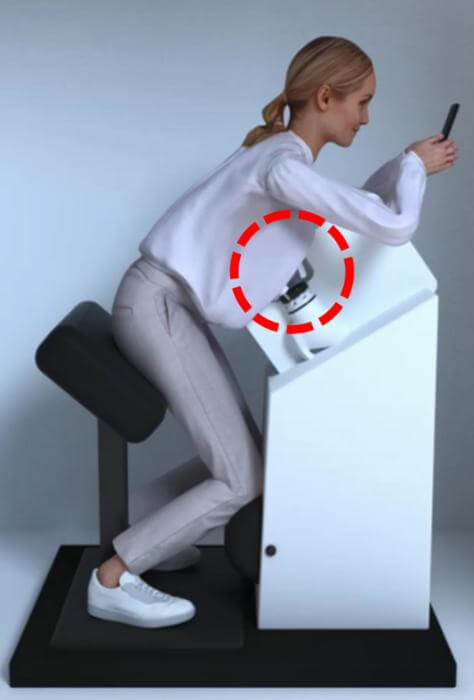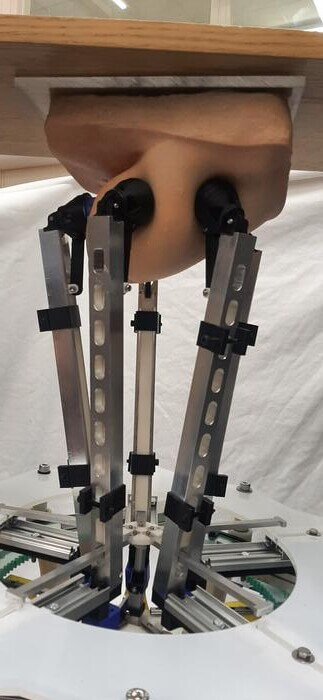BRISTOL, United Kingdom — Scientists in the United Kingdom have developed a new robot that takes the sometimes awkward human element out of clinical breast examinations. Intended to identify any abnormalities, changes, or lumps in a woman’s breasts that may point to breast cancer, CBEs are routine tests conducted by doctors. Now, this new device, developed by scientists at the University of Bristol, may be able to provide even more accurate examinations than a trained medical professional.
According to the American Cancer Society, more than 310,000 new cases of invasive breast cancer will be diagnosed in women in 2024. Early detection is incredibly important when it comes to treating the disease. Caught early enough, the five-year relative survival rate is 99 percent.
The research team calls their newly developed robot a manipulator. It is capable of applying a very specific amount of force over an area, similar to the amount of force or pressure used by human examiners. Thanks to sensor technology, the robot is also capable of finding lumps at larger depths than was previously possible.
While this work is still in its early stages, the research team believes that their invention could potentially revolutionize how women all over the world monitor their breast health. Put another way, this work may one day provide access to safe electronic CBEs located in easily accessible places like pharmacies or health clinics, capable of producing accurate results — just like blood pressure machines in many local drug stores.

Detecting a condition as serious as breast cancer, of course, requires absolute precision, repeatability, and accuracy. An inaccurate diagnosis or oversight can be the difference between life and death. Numerous automatic and semi-automatic devices have been proposed in the past to help optimize CBEs, especially when it comes to especially difficult-to-detect and hard-to-reach medical situations, such as during minimally invasive surgery.
The study authors included a mixed team of postgraduate and undergraduate researchers supervised by Dr. Antonia Tzemanaki from the Bristol Robotics Laboratory.
“There are conflicting ideas about how useful carrying out Clinical Breast Examinations (CBE) are for the health outcomes of the population,” says lead study author George Jenkinson in a media release. “It’s generally agreed upon that if it is well performed, then it can be a very useful and low risk diagnostic technique.”
“There have been a few attempts in the past to use technology to improve the standard to which healthcare professionals can perform a CBE by having a robot or electronic device physically palpate breast tissue. But the last decade or so of technological advances in manipulation and sensor technology mean that we are now in a better position to do this,” Jenkinson continues.
“The first question that we want to answer as part of this is whether a specialized manipulator can be demonstrated to have the dexterity necessary to palpate a realistic breast size and shape.”

The robot was created using a combination of 3D printing and other Computerized Numerical Control techniques, as well as a mixture of laboratory experiments and simulated experiments using a fake (silicone) breast and its “digital twin,” both of which were modeled on a volunteer at the Simulation and Modeling in Medicine and Surgery research group at Imperial College London.
Those simulations helped researchers conduct thousands of palpations and test numerous hypothetical scenarios, such as calculating the difference in efficiency when using two, three, or four sensors simultaneously. In a lab setting, they were then able to conduct more experiments on the silicone breast, showing that the simulations were indeed accurate and uncovering the right levels of force for the real equipment.
“We hope that the research can contribute to and complement the arsenal of techniques used to diagnose breast cancer, and to generate a large amount of data associated with it that may be useful in trying to identify large scale trends that could help diagnose breast cancer early,” Jenkinson adds.
“One advantage that some doctors have mentioned anecdotally is that this could provide a low-risk way to objectively record health data. This could be used, for example, to compare successive examinations more easily, or as part of the information packet sent to a specialist if a patient is referred for further examination.”
Moving forward, researchers aim to combine CBE techniques learned from professionals with AI to fully equip the manipulator with sensors that will gauge the effectiveness of the whole system in identifying potential cancer risks. The endgame, study authors say, is a device and series of sensors capable of detecting lumps more accurately and deeper than is currently possible via human touch. The robot may also be combined with pre-existing techniques, like ultrasound examination.
“So far we have laid all of the groundwork,” Jenkinson concludes. “We have shown that our robotic system has the dexterity necessary to carry out a clinical breast examination – we hope that in the future this could be a real help in diagnosing cancers early.”
This research was part of project ARTEMIS, funded by Cancer Research UK and supported by EPSRC. The study was presented at the at the RO-MAN conference.
